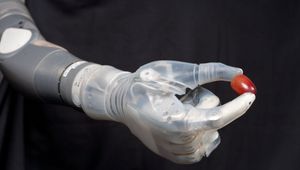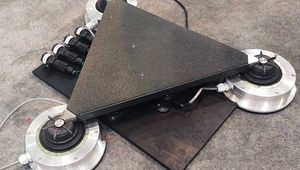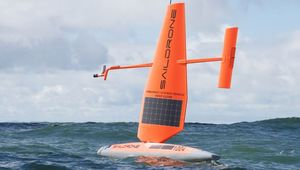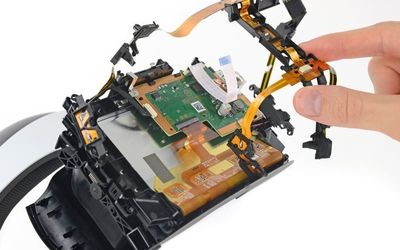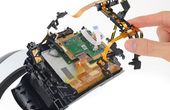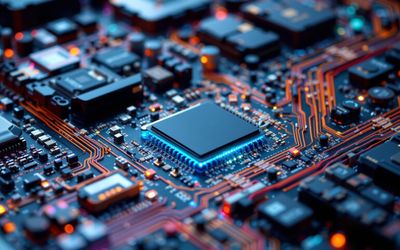Analog Devices MAX78000CAM02 Evaluation Kit
Evaluation Platform for MAX78000 MCU with Integrated CNN Accelerator
General
| Product Type | Evaluation Board |
| Applications | Prototyping & Development, Artificial Intelligence & Machine Learning |
| Key Features | MAX78000 MCU, Arm Cortex-M4F, RISC-V Co-Processor, 3.3V, Full-Duplex UART |
Technical Specifications
| Product Category | Evaluation Board |
| Core | Arm Cortex-M4F with RISC-V coprocessor |
| Microcontroller | MAX78000 MCU |
| Neural Network Accelerator | Convolutional Neural Network (CNN) |
| Image Sensor | CMOS VGA (640 x 480) Resolution |
| Connectors | JST SH 4-pin Connector |
| Communication Interfaces | I2C Controller/Target Operation, Full-duplex UART |
| Power Supply Input | Single 3.3V DC |
Overview
The Analog Devices MAX78000CAM02 Evaluation Kit is a compact hardware platform for evaluating the MAX78000 microcontroller, which integrates an Arm® Cortex®-M4F core and a Convolutional Neural Network (CNN) accelerator for edge-based AI applications. Designed specifically for low-power image processing, the kit includes a VGA (640x480) CMOS image sensor for capturing and analyzing visual data using onboard AI models. It features 512KB flash memory, 128KB SRAM, and a 16KB cache to support neural network inference.
The board operates with a single 3.3V power supply and includes an additional power line dedicated to the CNN engine. Developers can interface through SWD, I2C, or UART using available headers and connectors. Debugging is supported via a 10-pin SWD header, and the board also includes dual LEDs for status indication. The module is engineered for prototyping edge AI solutions in constrained environments, such as object detection, gesture recognition, and other vision-based applications.
MAX78000CAM02 Evaluation Kit Features
The MAX78000CAM02 Evaluation Kit enables real-time, low-power AI at the edge by combining a neural network accelerator with a VGA image sensor for efficient embedded image processing applications. Let’s go through its features in detail:
AI Edge Processing Platform
The MAX78000CAM02 Evaluation Kit is designed for edge AI development and image processing tasks. At its core is the MAX78000 microcontroller, which integrates an Arm Cortex-M4F processor alongside a dedicated CNN accelerator. This hardware configuration enables low-power inference operations for real-time image-based applications. It serves as a compact, lab-ready platform for prototyping and deploying AI models directly on embedded systems.
Memory and Processing Capabilities
The microcontroller includes 512KB of flash memory, 128KB SRAM, and a 16KB cache, providing sufficient resources for managing application code and neural network data. The architecture supports floating-point operations and features a RISC-V coprocessor to handle auxiliary tasks. These processing features make the board suitable for executing lightweight AI algorithms directly on the device.
Integrated Imaging Hardware
The kit includes a CMOS VGA image sensor (640 × 480 resolution), allowing it to capture image data for on-board AI inference. This makes it ideal for use cases like object recognition and gesture detection. The sensor works in conjunction with the CNN accelerator to enable real-time image classification without external processing.
Connectivity and Power Configuration
The evaluation board operates from a single 3.3V DC power supply, with a dedicated power path for the CNN engine. It provides essential interface options including a 10-pin SWD header for programming and debugging, a JST SH 4-pin connector, I2C controller/target operation, and full-duplex UART communication. Additionally, the board includes two indicator LEDs for basic status monitoring.
Applications
The Analog Devices MAX78000CAM02 Evaluation Kit is primarily used for developing and prototyping AI at the edge applications, particularly those involving image processing. Its integrated CNN accelerator and VGA-resolution CMOS image sensor make it suitable for tasks like facial recognition, object detection, and classification. The low-power design of the board lends itself to applications requiring efficient execution of neural networks on embedded systems. The applications include smart security cameras, portable diagnostic equipment, and other battery-powered vision systems where real-time image analysis is critical and power consumption must be minimized.
Where to find it

Mouser Electronics
Mouser Electronics is a worldwide leading authorized distributor of semiconductors and electronic components.
